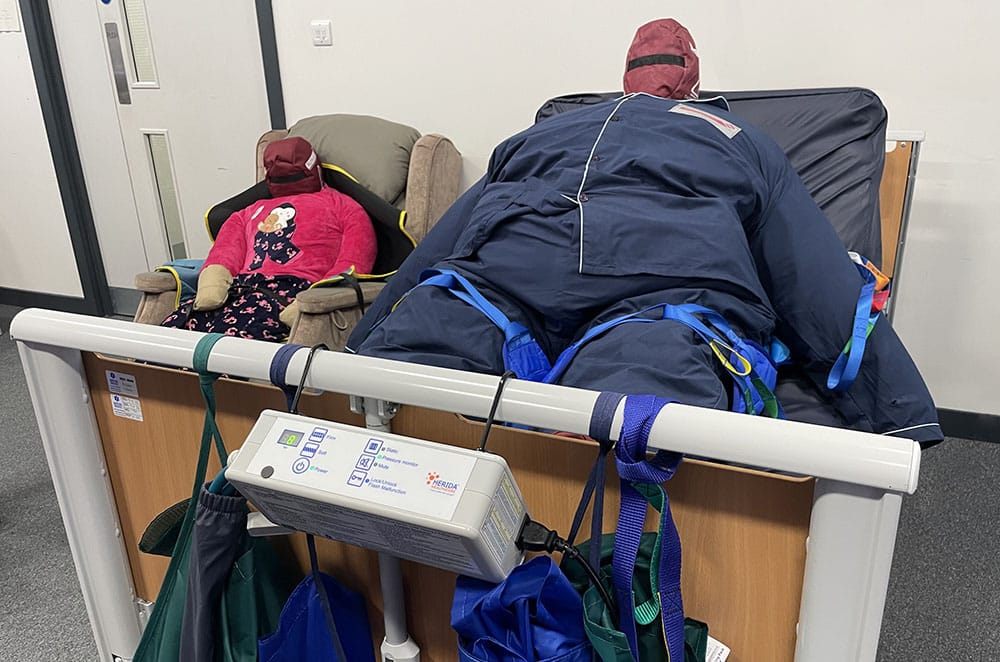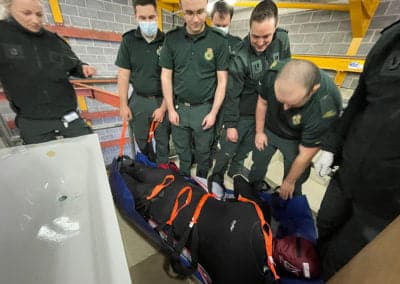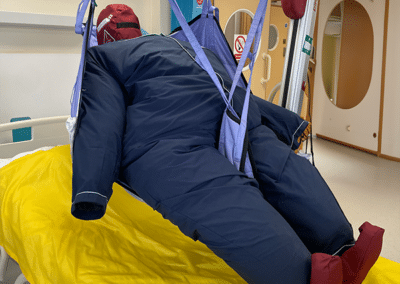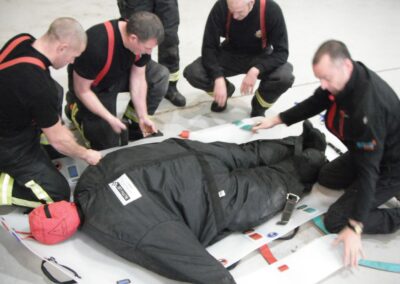Emergency preparedness is a critical aspect of disaster management and response, and it should take into consideration the needs of all individuals, including those with special requirements such as bariatric casualties. Bariatric casualties refer to individuals who are obese or extremely overweight, and they may require special considerations in emergencies.
Sadly, bariatric or plus-size people are left out of general emergency planning and disaster management, but it is critical to consider the possibility and likelihood of encountering larger/heavier individuals when thinking about your response and preparedness.
Here are some key points to consider in emergency preparedness for bariatric casualties:
Assessment and Identification:
Identify individuals in the community or within your organization who may be considered bariatric casualties. This information can be collected through health records, community surveys, or self-identification.
Specialist Equipment:
Ensure that your emergency response team has access to specialist equipment such as bariatric stretchers, heavy-duty wheelchairs, and lifting devices. These are essential for safely moving and transporting bariatric casualties.
Communication:
Establish clear communication protocols to coordinate the response for bariatric casualties. Ensure that all team members are aware of the unique needs of these individuals and can communicate effectively with one another.
Shelter and Evacuation:
Plan for shelter and evacuation options that can accommodate bariatric casualties. This might include identifying accessible shelters and transportation options that can support their needs.
Medical Care:
Ensure that medical facilities and healthcare providers are prepared to provide appropriate medical care for bariatric casualties. This includes having specialist equipment and trained staff.
Community Education:
Educate the community about emergency preparedness, and specifically address the needs of bariatric individuals. Encourage them to have personal emergency plans and to inform emergency services of their special requirements.
Nutrition and Medication:
Consider the dietary and medication needs of bariatric casualties during an emergency. Ensure that emergency supplies and shelters can accommodate their dietary restrictions and medication requirements.
Privacy and Dignity:
Respect the privacy and dignity of bariatric casualties. Establish protocols to maintain their privacy during medical assessments and care.
Inclusive Planning:
Integrate bariatric considerations into your overall emergency preparedness plan, alongside plans for other vulnerable populations, such as the elderly, children, and people with disabilities.
Training:
Provide training for emergency responders and healthcare professionals on how to care for bariatric casualties safely and effectively. This includes proper lifting techniques and the use of specialist equipment. This is where Ruth Lee come in!
We have manufactured a range of bariatric manikins for close to 20 years and they are an incredibly useful tool when it comes to training for disaster management. If rescue teams have trained and brain-stormed various extrication techniques to manage a bariatric casualty using a manikin, they will feel much more confident if they encounter the challenge in a genuine emergency. This leads to faster, safer evacuations.
It’s important to work with local authorities, healthcare providers, and organisations that specialize in emergency management to develop and implement a comprehensive emergency preparedness plan that addresses the needs of bariatric casualties.
Additionally, ongoing training and drills can help ensure that emergency responders are well-prepared to handle these situations when they arise.
If you would like to find out more about integrating bariatric manikins into your emergency preparedness training or would like a demonstration on your premises, get in touch by calling 01490 413 282 or send us an enquiry via the website.



